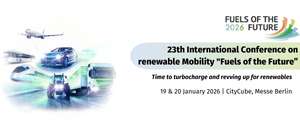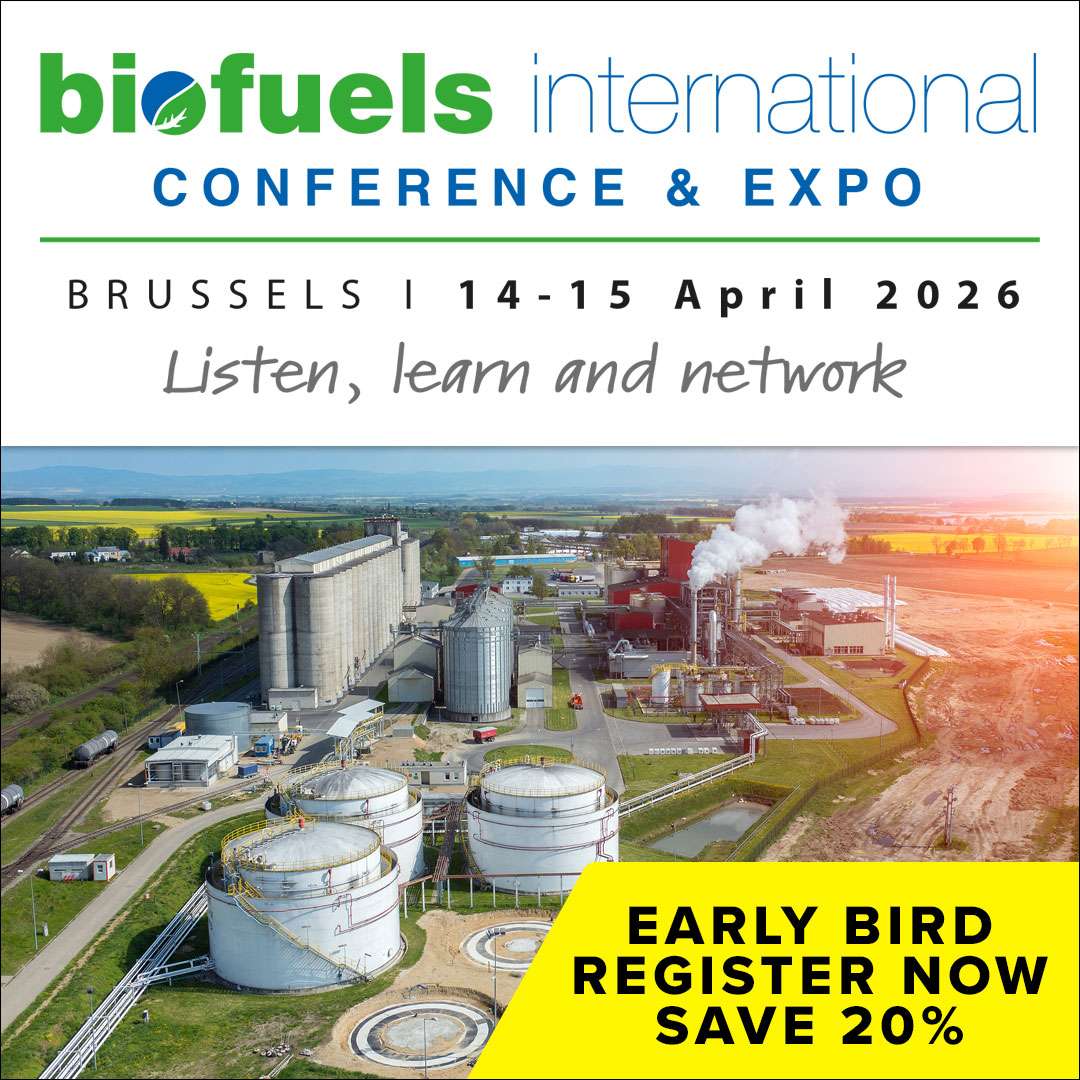Breaking barriers in SAF

Long seen as one of the most promising routes to decarbonising flight, SAF has historically struggled with scalability, cost and complexity.
However, in a lab at the University of Alberta, a young researcher believes those barriers are finally beginning to fall.
The research, conducted under the supervision of Prof. David C. Bressler, focuses on advancing the lipid-tohydrocarbon (LTH) process for renewable fuel production.
PhD student Bernardo Souto and his colleagues at the Biorefining Conversions and Fermentation Laboratory (Bressler’s lab) have been working hand-in-hand with analytical technology giant PerkinElmer to unlock a new way of producing renewable jet fuel.
The collaboration, which began under the Alberta Biojet Initiative (ABI), has led to a major breakthrough in how wa
ste fats and oils can be converted into high-quality, ready-to-use aviation fuel. “It’s an incredibly exciting time,” said Souto at the start of his discussion with the magazine’s editor.
“Our process takes lipids from virtually any source, animal fats, used cooking oil, even algae, and converts them directly into hydrocarbons suitable for jet engines.
“The best part is that it’s cleaner, cheaper and more efficient than many existing methods.”
A collaboration born from challenge
The partnership between PerkinElmer and the University of Alberta began in earnest in 2019, when the ABI was launched as a $7 million (€6 million) collaboration involving Natural Resources Canada, Natural Sciences and Engineering Research Council of Canada, Prairies Economic Development Canada, Alberta, Future Energy Systems, the Faculty of Agricultural, Life & Environmental Sciences at the University of Alberta, Edmonton International Airport, and FORGE Hydrocarbons, which is the industry and commercialisation partner.
The goal: to develop and demonstrate technologies capable of producing sustainable aviation fuel from Canadian feedstocks. At that time, Souto’s research group, led by Prof. Bressler, was already known for its pioneering work in lipid conversion – transforming oils and fats into renewable hydrocarbons.
However, as their experiments grew more complex, so did their analytical needs. “We had the technology, but we needed precision,” Souto explained. “We were generating hundreds of compounds in our reactions, and we needed to identify and quantify every one of them accurately. That’s when PerkinElmer came in.”
Working closely with PerkinElmer’s engineers and technicians, the Bressler’s lab team helped design and optimise a suite of advanced analytical instruments, including gas chromatographs, thermal analysers and elemental analysers, specifically tailored for renewable fuel research.
PerkinElmer was very supportive giving the department good price reductions, allowing the team not only to push their research further, but to showcase how such analytical innovation could accelerate the wider biofuels sector. “They really helped us bridge the gap between laboratory curiosity and industrial application,” Souto continued.
“By giving us access to cutting-edge tools, we could understand our feedstocks, track every product and evaluate our yields in real time.”
From laboratory bench to industrial scale
What began as a proofof- concept in 2003 has since matured into a fullscale demonstration.
Over two decades of development, the Bressler’s lab team has advanced from tiny microreactors producing millilitres of fuel to pilot-scale systems capable of generating 20 kilograms per hour.
Each step has refined the process, and each scale-up has been guided by careful analysis.
The underlying technology, now patented and licensed to FORGE Hydrocarbons, a Canadian spin-off company from the university, offers a compelling new route to SAF. FORGE is currently constructing its first commercial plant in Sombra, Ontario, designed to produce renewable diesel and later expand to sustainable jet fuel production.
What makes the FORGE LTH Process unique is its feedstock flexibility and simplicity.
Traditional SAF pathways, such as the widely used hydroprocessed esters and fatty acids (HEFA) route, depend on expensive catalysts and high-purity feedstocks.
In contrast, the FORGE LTH Process relies primarily on temperature and pressure to break down complex lipids into usable hydrocarbons, eliminating the need for catalysts or hydrogen during the renewable diesel stage. For sustainable aviation fuel production, only small amounts of hydrogen are later introduced to improve fuel properties while maintaining a low carbon profile. “It’s what we call a ‘feedstock-agnostic’ process,” Souto explained.
“It doesn’t matter if the oil comes from plants, animals, or microorganisms, we can use it.
“It also doesn’t need to be pristine. Even waste or low-quality fats can be turned into clean, drop-in fuels that are chemically similar to diesel or jet fuel.” This simplicity has powerful implications for scalability and cost reduction.
The PerkinElmer effect
PerkinElmer’s technical collaboration and support were instrumental in advancing the analytical component of our SAF research.
Their instruments have given the researchers a clearer view of what happens inside the process, helping them understand and optimise the chemistry in unprecedented detail. “In the early days, analysing a single gas sample required several instruments and additional time to obtain a full picture,” Souto recalled.
“We needed to use several instruments to get a full picture. Thanks to the new system we developed with PerkinElmer, we can now complete the same analysis more efficiently and with greater accuracy.”
The collaboration has also produced an online gas chromatograph capable of sampling directly from the process. This innovation allows researchers to monitor chemical changes in real time.
“It means we can literally see what’s happening inside the process at the push of a button,” said Souto.
“That’s a huge leap forward for optimisation. It helps us connect process conditions to the chemistry, and the chemistry to the final product.” This ability to obtain rapid, high-resolution data has dramatically improved research efficiency.
“When you’re running pilot plants, you’re generating hundreds of samples a day,” Souto noted.
“You can’t afford to spend hours analysing each one. The speed and reliability we’ve achieved have made a massive difference.”
From waste to wings
While the past focus was on renewable diesel, the Bressler’s lab ultimate goal is clear: sustainable aviation fuel (SAF).
The demand for SAF is rising rapidly as airlines and governments set aggressive decarbonisation targets. Aviation currently accounts for around 2% of global greenhouse gas emissions, and the International Air Transport Association (IATA) projects that demand for jet fuel will double by 2050.
“If we want to fly more without worsening emissions, we need alternatives,” Souto said.
“We don’t have to replace fossil fuels entirely, but we do need to meet growing demand with sustainable options.”
Souto envisions a future where modular SAF production units can operate directly at airports, using locally available waste oils to produce fuel on site. “Imagine collecting used cooking oil from a city’s restaurants and converting it into jet fuel right at the airport,” he said.
“That’s the kind of decentralised model that FORGE Hydrocarbons is deploying.”
The potential advantages of the process extend beyond cost and logistics. Unlike HEFA fuels, which often lack aromatic compounds necessary for jet engine performance, the FORGE LTH Process naturally produces a broader spectrum of hydrocarbons, including aromatics, that can make the resulting fuel more compatible with current aviation standards.
“In theory, our fuel could be used without blending,” Souto suggested. “That’s what we’re testing now – ensuring it meets ASTM specifications for drop-in use.”
Scaling up for the SAF era
The team’s progress so far is impressive. More than 100 pilot campaigns have been conducted, amounting to over 2,000 hours of continuous operation.
The renewable diesel produced already meets Canadian fuel quality standards, and work is now underway to finalise testing for SAF certification. The transition from renewable diesel to aviation-grade fuel is not just a chemical step, but a regulatory one.
Every new SAF pathway must pass rigorous ASTM testing to ensure compatibility, safety and performance.
Souto’s team is now focusing on the fine-tuning required to meet those standards, analysing molecular profiles, and ensuring consistent quality across feedstocks.
“This is where PerkinElmer continues to be critical,” said Souto. “We’re studying how different feedstocks behave and how composition affects the end product. The goal is to tailor the process so we can control the properties we need.”
The University of Alberta’s research does not stop there. The team is also exploring how reaction parameters can be optimised for energy efficiency and carbon reduction, potentially opening doors to on-site SAF production at regional airports or refineries.
FORGE Hydrocarbons, meanwhile, is moving ahead with its commercial deployment.
Once the Ontario plant is fully operational, it will represent one of Canada’s most advanced renewable fuel facilities and a proof point for a process that could reshape the market.
The future of flight, fuelled by partnership
Looking ahead, Souto believes that collaboration between academia and industry will remain vital to progress.
“We’re always facing new challenges,” he said. “That’s the nature of research. But the partnership with PerkinElmer allows us to tackle them faster, to develop new tools, new methods, and ultimately better fuels.”
For PerkinElmer, the collaboration is equally rewarding, demonstrating how advanced analytical science can accelerate clean energy innovation. The company now uses the Alberta lab as a demonstration site, showcasing to other researchers and industry partners how cutting-edge instrumentation can drive real-world breakthroughs.
Each year, Dr Bressler and Souto present their findings as part of PerkinElmer’s seminar series, sharing lessons from their SAF journey and highlighting how analytical precision translates into cleaner skies.
A cleaner horizon
As airlines, governments and fuel producers worldwide push towards net-zero, the need for viable, scalable SAF solutions has never been greater. The FORGE LTH Process could well be one of the keys to meeting that challenge.
By combining scientific rigour, industrial insight and the power of partnership, Souto and his colleagues are proving that the future of flight does not have to come at the expense of the planet.
“We’re not trying to reinvent aviation,” Souto concluded. “We’re just making it sustainable – one drop of fuel at a time.”
For more information: Visit: bresslerlab.ualberta.ca











